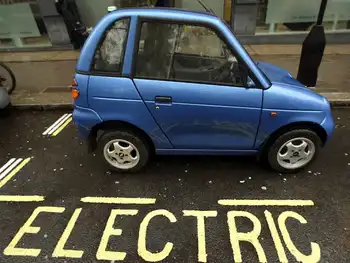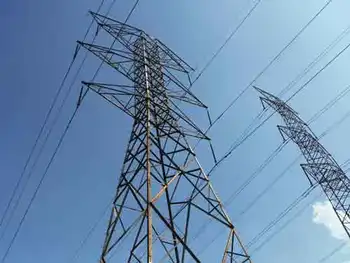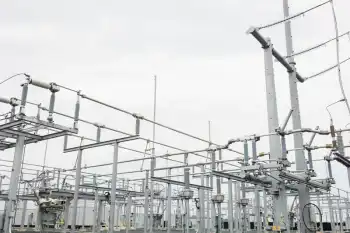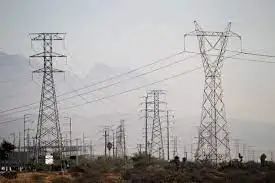Miniature reactors seek approval to work in U.S.
By Business Week
Electrical Testing & Commissioning of Power Systems
Our customized live online or in‑person group training can be delivered to your staff at your location.

- Live Online
- 12 hours Instructor-led
- Group Training Available
John Deal, chief executive officer of Hyperion Power Generation Inc., intends to apply for a license “within a year” for plants that would power a small factory or town too remote for traditional utility grid connections.
The Santa Fe, New Mexico-based company and JapanÂ’s Toshiba Corp. are vying for a head start over reactor makers General Electric Co. and Areva SA in downsizing nuclear technology and aim to submit license applications in the next year to U.S. regulators. TheyÂ’re seeking to tap a market that has generated about $135 billion in pending orders for large nuclear plants.
“We’re building iPhones when the nuclear industry has traditionally built mainframe computers,” said Deal. Hyperion has more than 150 purchase commitments from customers such as mining and telecom companies, provided its technology gets licensed for operation, he said.
A generation after the Chernobyl and Three Mile Island accidents wiped reactor construction off the agenda of many governments, developers are pressing ahead with designs to satisfy demand for power that doesnÂ’t pollute the skies.
World electricity demand is likely to grow 2.7 percent a year from now until 2015 and then 2.4 percent annually until 2030, the International Energy Association estimates.
While utility-scale reactors cost about $2.3 billion apiece and produce 1.2 gigawatts of power, HyperionÂ’s price tag is $50 million for a 25-megawatt reactor more comparable to a diesel generators or wind farms.
Transportable by truck, the units would come in a sealed box and work around the clock, requiring less maintenance than a fossil fuel plant, the developers say. TheyÂ’d cost 15 percent less per megawatt of capacity than the average full-scale atomic reactors now in on the drawing board, according to World Nuclear Association data.
“A 25-megawatt plant would put electricity into 20,000 homes, and it would fit inside this room,” James Kohlhaas, vice president at a Lockheed Martin Corp. unit that builds power systems for remote military bases, said in an interview. “It’s a pretty elegant micro-grid solution.”
Certifying and building small reactors will require the same multi-year licensing procedure necessary for bigger plants. And since no small-scale systems are operating, thereÂ’s no track record to know how well they will work.
“Whether it’s a small or large reactor, the hoops you have to jump through are the same,” said Hans-Holger Rogner, head of economic planning at the International Atomic Energy Agency. “You open up a Pandora’s Box of intervention from society every time you try to build any kind of nuclear plant.”
Environmentalists are concerned the small reactors would pose the same risk of leaking radioactive materials as their larger counterparts, said Jan Beranek, nuclear energy project leader at Greenpeace International in Amsterdam.
“Terrorists could hijack a reactor and directly use it to cause a meltdown or use it to fabricate fissile materials for later use in a weapon,” Beranek said.
Deal rejects those concerns, noting his units are designed to fit in the same canisters used to transport nuclear fuel for bigger plants around the world. The power-producing core of HyperionÂ’s reactor comes in multiple sealed chambers, which would contain any leak. The entire unit would be installed in an underground vault to protect it from tampering and natural threats, the company says.
“You still have to have guards and dogs, but you have to do that with a grocery store in some countries,” Deal said.
So far, no manufacturer has sought certification for any small reactor, according to the U.S. Nuclear Regulatory Commission. Formal approvals would probably take three to five years, the same as for bigger reactors, said Scott Burnell, a spokesman for the commission.
Small reactors have been used in U.S. submarines since the USS Nautilus was commissioned in 1954. RussiaÂ’s Rosatom Corp. is using its experience on submarines and icebreakers to develop atomic plants for floating barges.
HyperionÂ’s technology was invented at the U.S. governmentÂ’s Los Alamos National Laboratory in New Mexico. Six other reactor designs are in information-sharing stages, including ones from NuScale Power Inc., Toshiba and its Westinghouse unit.
Westinghouse has been developing small reactors since 1999, imagining customers in “lesser developed” countries and from small industry and utilities, Michael Anness, manager of the company’s Advanced Reactors, Research and Technology division, said in an e-mailed response to questions.
Toshiba, based in Tokyo, is working on reactors that would produce 10 megawatts and 50 megawatts, called 4S for “super- safe, small and simple.” It will apply later this year for U.S. approval to test the unit in the village of Galena in central Alaska, said company spokesman Keisuke Ohmori.
Galena has no connection to power lines and is closed to barge traffic for supplies for more than half the year when the Yukon River freezes. To provide heat and electricity, the town relies on diesel fuel, whose price has risen by about 48 percent in the past 12 months.
“We aim to get 4S orders in remote areas where it is more cost-efficient to generate power on a local basis than use power grids,” Ohmori said. “A great many people are interested.”
Both Toshiba and Hyperion are designing reactors that would run about five times longer without servicing than the 18 to 24 months typical at utility plants.
Toshiba signed an agreement in November with TerraPower, controlled by Microsoft Corp. founder Bill Gates, to exchange design and engineering know-how. In February Gates said a small-scale pilot project needed “several billion” dollars. Deal, a licensed Christian minister and self-confessed “left-wing nutbag” who only began to support nuclear power four years ago, says the simplicity and scale of his reactor can overcome concerns about waste and terrorism.
“Attitudes change,” said Deal, 46, who’s working at his sixth start-up company in 20 years after previous roles at spy satellite technology and wind power businesses. “There’s not a lot of people out there railing against nuclear power.”











